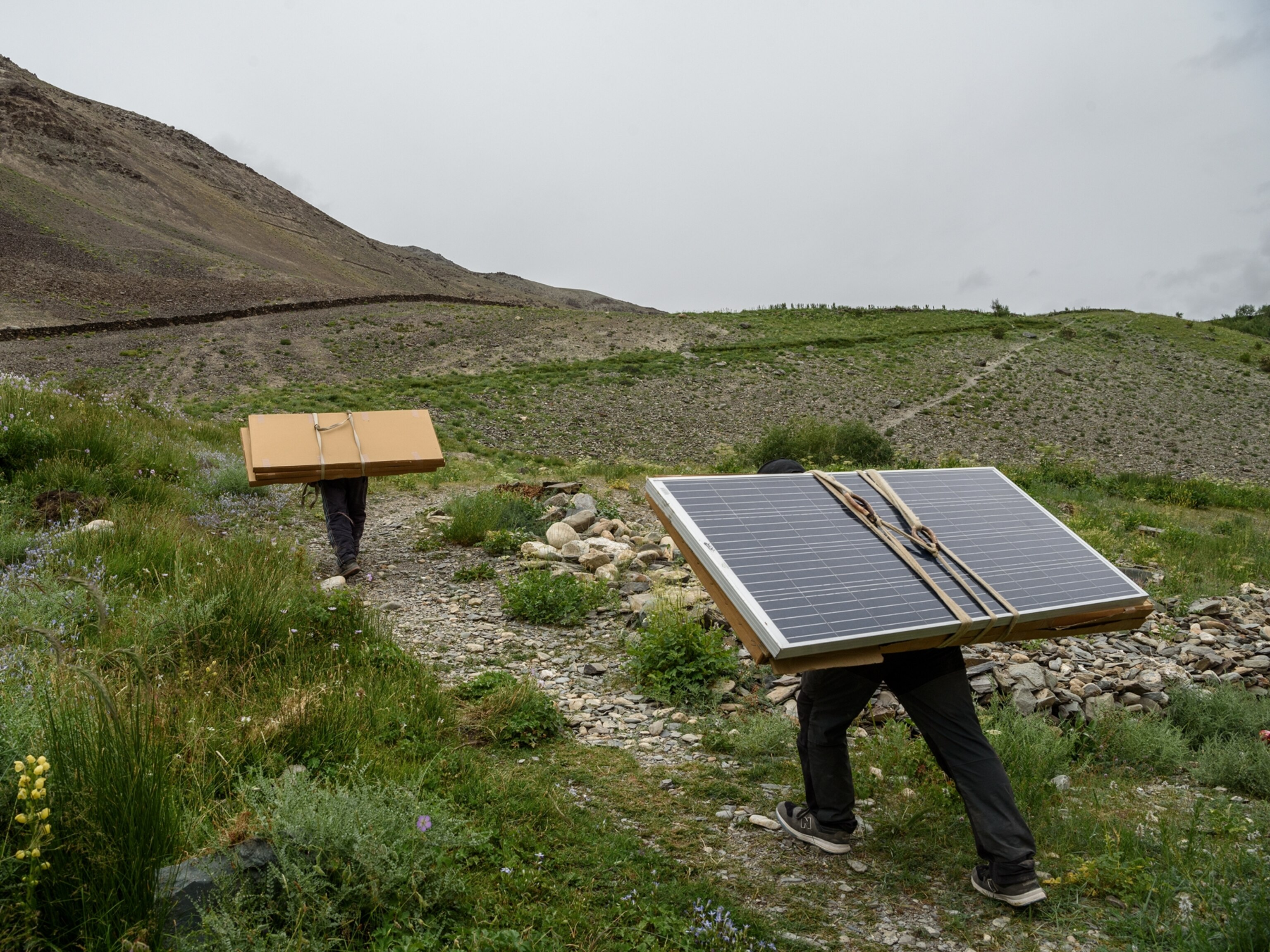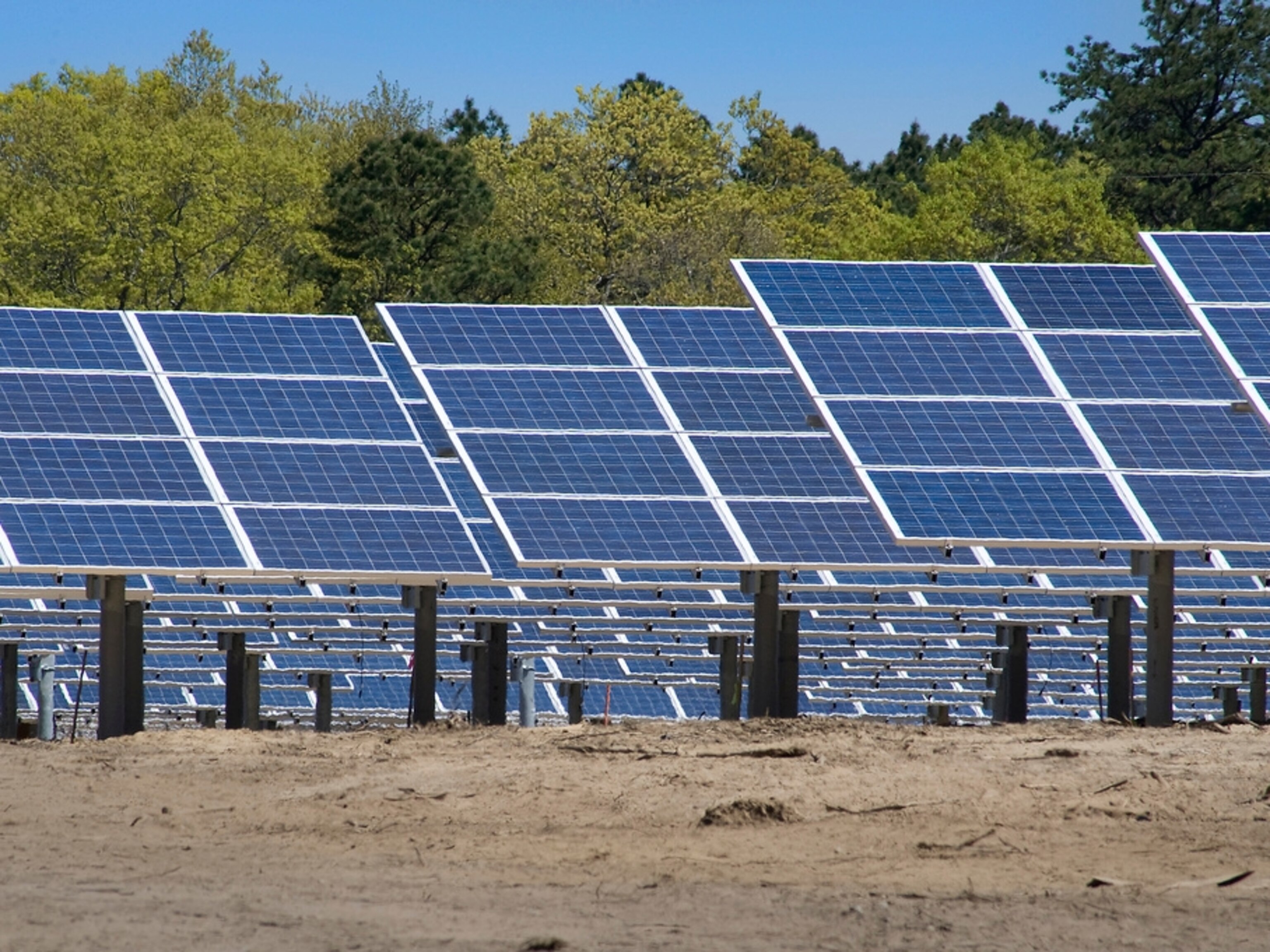
Are Those Solar Panels Facing the Wrong Direction?
Conventional wisdom says that if you put solar panels on your roof in the Northern Hemisphere, you should point them within 30 degrees of true south to generate the most energy in the course of a year. But a new study by Pecan Street Research Institute, an Austin, Texas-based research and development organization, suggests that most people may do better at covering their own electrical use and reducing stress on utility grids during summertime peak demand periods if they aim the panels westward instead. (See related quiz: What You Don’t Know About Solar Power.”)
Though the study has not been released publicly, Pecan Street provided a copy to National Geographic News. It analyzed 50 homes in the Austin area, looking not just at the amount of electricity generated by the panels, but at the impact on homeowners’ electricity use and the utility grid during periods of summer peak electrical demand, which generally occur between 3 p.m. and 7 p.m. (See related post: “Solar Researchers Dig Deeper Into Snow Issue.”)
The study found that west-facing solar systems reduced the amount of electricity that homeowners needed to draw from the grid during summer peak demand by 65 percent. Homes with the conventional true-south orientation, in comparison, achieved a 54 percent reduction.
Pecan Street chief executive and study co-author Brewster McCracken explained that west-oriented panels may be more effective for many homeowners because of their lifestyles. West-oriented panels are more effective at capturing solar energy late in the afternoon, which also happens to be the time that most people get home from work and turn on their air conditioning in the summer, he said. So homeowners with panels facing in that direction are optimizing their solar power generation at precisely the time that their own usage surges, and when the utility company needs the most help coping with demand.
Additionally, McCracken said, using a west orientation for panels means that less electricity will go unused by the homeowners who generated it, and end up as surplus electricity being put back into the grid. That makes things easier for utility companies. “They’re not structured to handle high levels of electricity being sent back to the grid,” he said. “If they have to do that, it becomes a challenge to maintain electric reliability in an area.” (See related story: “New ‘Flexible’ Power Plants Sway to Keep Up With Renewables.”)
While solar panel installers have known that west-facing panels may be more effective for a while, utility companies still cling to the south-is-best rule-of-thumb, and refuse to give rebates to homeowners unless their panels are facing south, McCracken said. He’s hoping that the study will prompt them to rethink their opposition to west-facing panels.
The Pecan Street study isn’t the first to show that west-facing panels may be more effective. A California Public Utility Commission study published in 2011 also found that west-facing systems were “significantly better” at offsetting peak load that south-facing ones, even though they had lower annual energy yields.
Solar Energy Industries Association spokesperson Samantha Page declined comment on the study. A spokesman for Southern California Edison said that the utility continues to recommend a conventional south orientation for solar panels.
David Mooney, laboratory program manager for solar R&D portfolio at the National Renewable Energy Laboratory in Colorado, said that Pecan Street’s findings weren’t a surprise, but hoped that the more precise quantification would motivate both consumers and utilities to fine-tune their use of solar installations.
Mooney said that the benefits of tinkering with solar panel orientation would vary, depending upon the region, and that no single prescription necessarily fits all places. “In Colorado, for example, we tend to have clouds rolling in off the mountains in the west in the summer, so west-facing arrays would produce the least electricity,” he said. “You would want to have a southern or eastern orientation here to get the most electricity, and that wouldn’t necessarily align with the utility company’s peak demand.”
Mooney also noted that the structure of the incentives provided by utility companies figures into how consumers chose to orient their panels. His own utility provider in Colorado, for example, offers incentives that reward optimum output over the year, rather than the amount of electricity generated during periods of peak demand. “I get no benefit from shaving their peak demand, so there’s no motivation to do it,” he said.
Vote and comment: “What Energy Solution Should We Develop Next?“)
Related Topics
You May Also Like
Go Further
Animals
- Octopuses have a lot of secrets. Can you guess 8 of them?
- Animals
- Feature
Octopuses have a lot of secrets. Can you guess 8 of them? - This biologist and her rescue dog help protect bears in the AndesThis biologist and her rescue dog help protect bears in the Andes
- An octopus invited this writer into her tank—and her secret worldAn octopus invited this writer into her tank—and her secret world
- Peace-loving bonobos are more aggressive than we thoughtPeace-loving bonobos are more aggressive than we thought
Environment
- Listen to 30 years of climate change transformed into haunting musicListen to 30 years of climate change transformed into haunting music
- This ancient society tried to stop El Niño—with child sacrificeThis ancient society tried to stop El Niño—with child sacrifice
- U.S. plans to clean its drinking water. What does that mean?U.S. plans to clean its drinking water. What does that mean?
- Food systems: supporting the triangle of food security, Video Story
- Paid Content
Food systems: supporting the triangle of food security - Will we ever solve the mystery of the Mima mounds?Will we ever solve the mystery of the Mima mounds?
History & Culture
- Strange clues in a Maya temple reveal a fiery political dramaStrange clues in a Maya temple reveal a fiery political drama
- How technology is revealing secrets in these ancient scrollsHow technology is revealing secrets in these ancient scrolls
- Pilgrimages aren’t just spiritual anymore. They’re a workout.Pilgrimages aren’t just spiritual anymore. They’re a workout.
- This ancient society tried to stop El Niño—with child sacrificeThis ancient society tried to stop El Niño—with child sacrifice
- This ancient cure was just revived in a lab. Does it work?This ancient cure was just revived in a lab. Does it work?
Science
- The unexpected health benefits of Ozempic and MounjaroThe unexpected health benefits of Ozempic and Mounjaro
- Do you have an inner monologue? Here’s what it reveals about you.Do you have an inner monologue? Here’s what it reveals about you.
- Jupiter’s volcanic moon Io has been erupting for billions of yearsJupiter’s volcanic moon Io has been erupting for billions of years
- This 80-foot-long sea monster was the killer whale of its timeThis 80-foot-long sea monster was the killer whale of its time
Travel
- How to plan an epic summer trip to a national parkHow to plan an epic summer trip to a national park
- This town is the Alps' first European Capital of CultureThis town is the Alps' first European Capital of Culture
- This royal city lies in the shadow of Kuala LumpurThis royal city lies in the shadow of Kuala Lumpur
- This author tells the story of crypto-trading Mongolian nomadsThis author tells the story of crypto-trading Mongolian nomads




